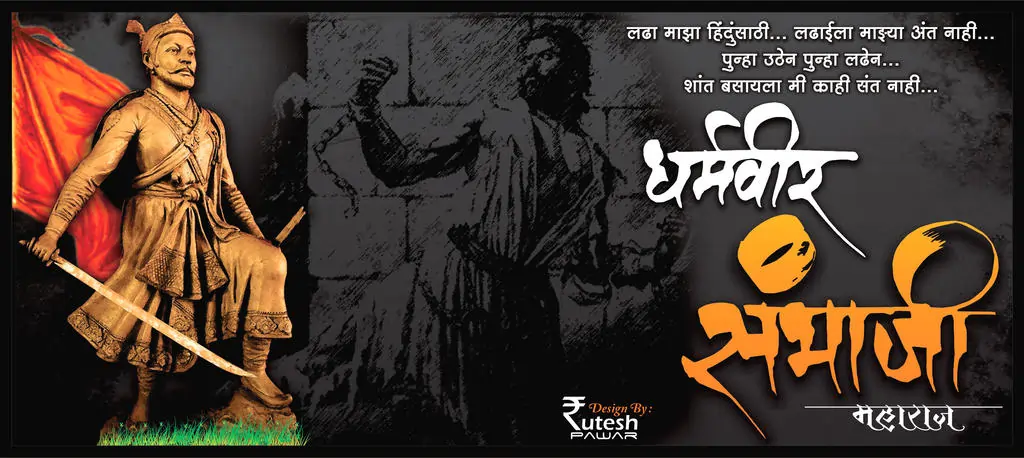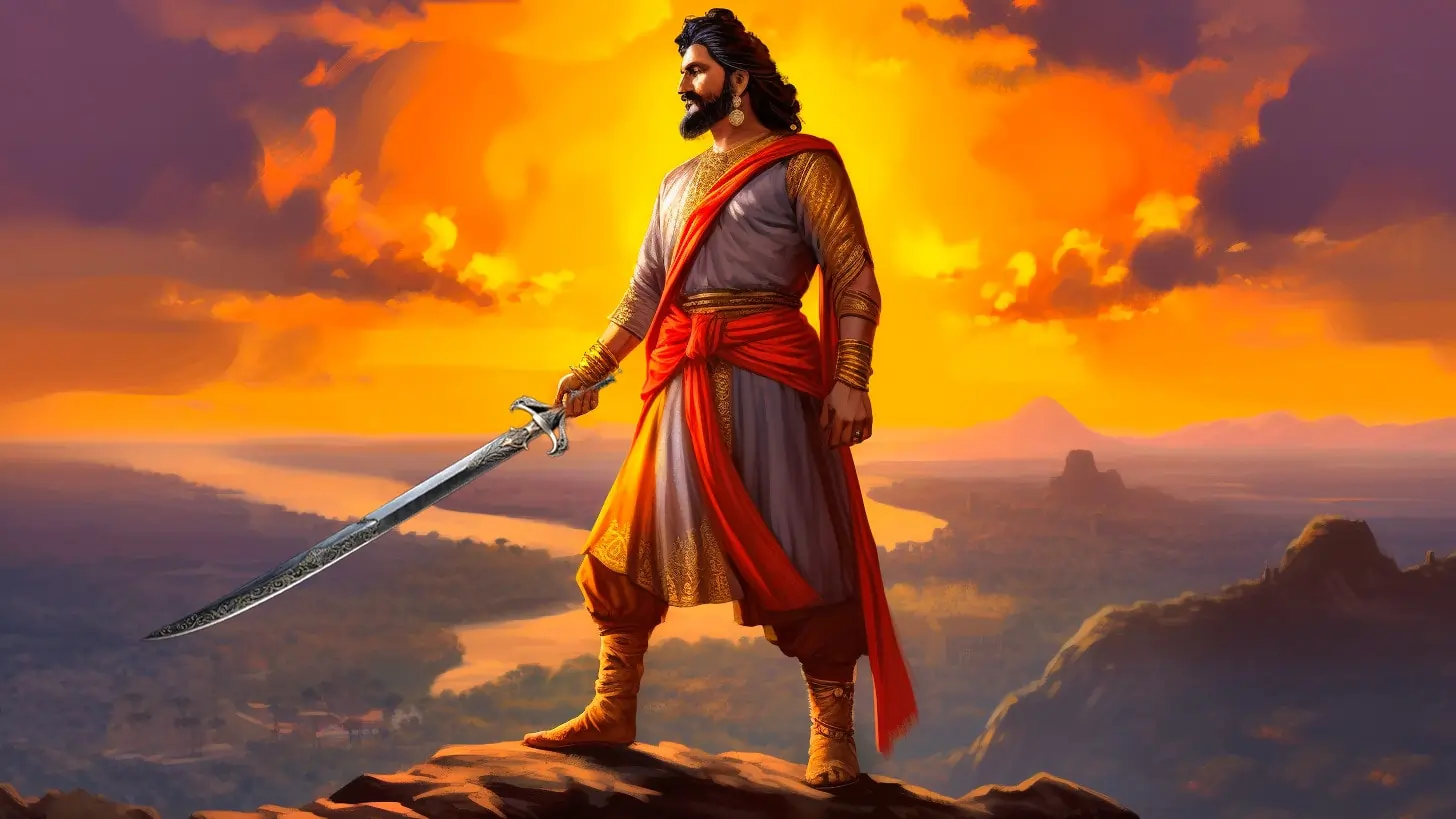Sambhaji Maharaj, the second Chhatrapati of the Maratha Empire, stands out as one of the most valiant and determined rulers in Indian history. He was the son of the great warrior king Chhatrapati Shivaji Maharaj, the founder of the Maratha Empire. Throughout his reign, Sambhaji Maharaj fought tirelessly to protect the sovereignty of his kingdom against external forces, especially the Mughal Empire, led by Emperor Aurangzeb.
Sambhaji Maharaj’s legacy goes beyond his military conquests. His ideals of justice, governance, and religious tolerance have left an enduring mark on history. By sacrificing his life for the principles he stood for, Sambhaji Maharaj earned the title “Dharmaveer”, meaning the protector of dharma (righteousness). This article delves into the life, reign, and legacy of Sambhaji Maharaj, whose unwavering courage continues to inspire generations.
Early Life of Sambhaji Maharaj
Sambhaji Maharaj was born on May 14, 1657, at Purandar Fort in present-day Maharashtra. He was the eldest son of Chhatrapati Shivaji Maharaj and his wife, Saibai Nimbalkar. At the tender age of two, Sambhaji Maharaj lost his mother, leaving a void in his early childhood. However, his grandmother, Jijabai, ensured that he grew up with a strong sense of discipline and love for his people.
Shivaji Maharaj recognized the challenges his son would face as a future ruler, so he made sure Sambhaji Maharaj received a rigorous education. Sambhaji mastered Sanskrit, Hindi, Marathi, and Persian, skills essential for diplomacy and statecraft. He also underwent extensive military training, learning strategy, cavalry, and guerrilla tactics, which would become crucial in the Maratha Empire’s fight against external forces.
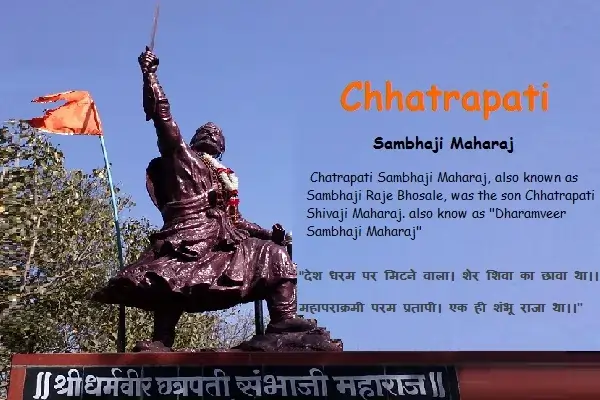
Struggles for the Throne
After Chhatrapati Shivaji Maharaj’s death in 1680, the Maratha Empire entered a period of political unrest. Although Sambhaji Maharaj was the eldest son, securing the throne became a challenge due to internal family politics. His stepmother, Soyrabai, plotted to place her son Rajaram on the throne. She succeeded in imprisoning Sambhaji Maharaj at Panhala Fort to clear the way for Rajaram’s succession.
But Sambhaji Maharaj’s resilience could not be suppressed. He escaped captivity, quickly gathered loyal forces, and marched to Raigad Fort, the capital of the Maratha Empire. With his determination and military support, he took control and officially became Chhatrapati of the Maratha Empire on July 20, 1681.
Despite the power struggles within his family, Sambhaji Maharaj remained focused on defending his kingdom against external threats, especially the Mughal Empire.
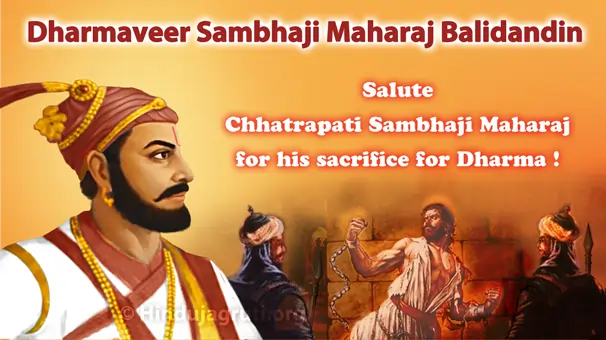
Sambhaji Maharaj’s Conflict with the Mughal Empire
During his reign, Sambhaji Maharaj’s most significant challenge came from Mughal Emperor Aurangzeb, who aimed to expand Mughal control over the Deccan region. The Marathas posed a serious threat to the Mughal Empire, leading Aurangzeb to launch several campaigns against them.
In 1681, soon after Sambhaji Maharaj’s coronation, Aurangzeb moved south with an army of over 500,000 soldiers, aiming to subjugate the Marathas. However, Sambhaji Maharaj, utilizing his father’s guerrilla warfare tactics, effectively resisted the Mughal forces. His army disrupted Mughal supply lines, raided their camps, and ambushed troops in the rugged Deccan terrain, leaving Aurangzeb frustrated and unable to secure a swift victory.
One of the notable battles during this period was The Battle of Wai in 1687. Despite losing his chief commander, Hambirrao Mohite, Sambhaji Maharaj inflicted significant damage on Mughal forces, forcing them to retreat. His military acumen and guerrilla tactics made the Marathas a formidable force that Aurangzeb could not easily defeat.
Sambhaji Maharaj’s Vision for the Maratha Empire
Sambhaji Maharaj’s reign was not solely defined by warfare. He implemented reforms to strengthen the administrative structure of the Maratha Empire. He ensured that the empire functioned efficiently even during times of war, displaying his governance skills alongside his military prowess.
In addition to his administrative reforms, Sambhaji Maharaj also supported the arts and culture. He encouraged scholars, poets, and artists to contribute to the Maratha Empire’s cultural renaissance. Sambhaji himself was an accomplished writer and composed the Sanskrit text “Budhbhushanam”, which addressed statecraft, politics, and ethics.
Religious Tolerance and Commitment to Dharma
One of Sambhaji Maharaj’s core beliefs was religious tolerance. As a devout Hindu, he deeply respected all faiths and ensured that his people could practice their religions freely. His inclusive approach contrasted with Aurangzeb’s policies, which sought to impose Islamic rule across India.
Sambhaji Maharaj protected the religious practices and places of worship for Muslims, Christians, and Jews living within the Maratha Empire. His pluralistic approach earned him respect across religious communities, further solidifying his reputation as a fair and just ruler.
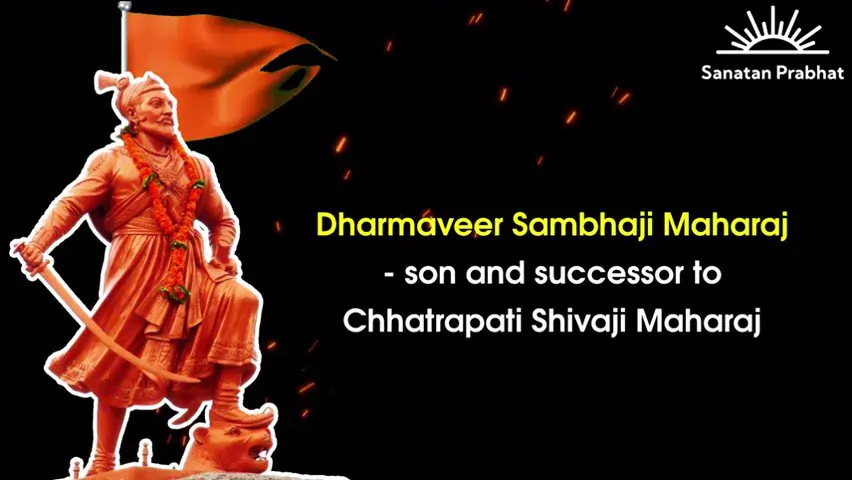
The Capture and Martyrdom of Sambhaji Maharaj
In 1689, after nearly a decade of warfare, betrayal led to Sambhaji Maharaj’s capture by Mughal forces. Muqarrab Khan, one of Aurangzeb’s generals, arrested Sambhaji Maharaj and his close associate Kaviraj Kalash. Aurangzeb, eager to break his most formidable enemy, gave Sambhaji Maharaj two choices: convert to Islam or face death.
Sambhaji Maharaj, true to his principles, refused to convert. He chose to defend his dharma, even at the cost of his life. This defiance led Aurangzeb to subject Sambhaji Maharaj to horrific torture. Despite the unimaginable cruelty, Sambhaji Maharaj did not waver.
On March 11, 1689, after days of brutal treatment, the Mughals executed Sambhaji Maharaj. His martyrdom shocked the Maratha Empire and sparked a renewed resolve to continue resisting Mughal rule.
Sambhaji Maharaj’s Legacy
Sambhaji Maharaj’s death marked a turning point in Indian history. Although the Mughals executed their greatest enemy, they could not crush the spirit of the Marathas. The Maratha forces, inspired by Sambhaji Maharaj’s courage and sacrifice, continued their fight against Aurangzeb’s armies.
After Sambhaji Maharaj’s death, his brother, Rajaram Maharaj, and later his wife, Tarabai, led the Marathas in their ongoing struggle. Their relentless guerrilla warfare efforts drained the Mughal Empire’s resources, leading to the empire’s decline after Aurangzeb’s death in 1707.
Sambhaji Maharaj’s legacy as Dharmaveer lives on as a symbol of resistance against oppression. His bravery and sacrifice in defending his kingdom and his people have left an indelible mark on Indian history.
In Maharashtra, people remember Sambhaji Maharaj as a hero, and his name lives on in forts, schools, and monuments. Forts like Raigad and Sinhagad, where he once lived and fought, stand as lasting symbols of his enduring legacy.
Conclusion
Sambhaji Maharaj’s life exemplifies bravery, resilience, and sacrifice. As Chhatrapati Shivaji Maharaj’s successor, he defended the Maratha Empire at a time when the Mughal Empire sought to dominate India. His refusal to surrender his principles or faith in the face of death solidifies his place in history as one of India’s greatest kings.
Sambhaji Maharaj’s legacy goes beyond his military achievements. His dedication to justice, governance, and religious tolerance remains relevant even today. His story serves as a timeless reminder that the fight for righteousness and freedom, no matter how challenging, is always worth pursuing. Sambhaji Maharaj will forever be remembered as the courageous Maratha king who defied the mighty Mughal Empire, embodying the true spirit of resistance and patriotism.
